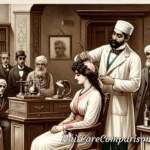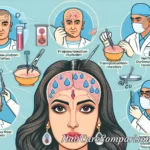Hair transplantation has become a beacon of hope for many facing hair loss, offering a chance to regain a full head of hair and with it, confidence and self-esteem. However, the success of such a procedure heavily relies on the quality and source of hair used for transplantation. In this comprehensive guide, we’ll explore the various aspects of hair sourcing for transplants, ensuring you’re well-informed before taking the next step in your hair restoration journey.
The Importance of Quality Hair Sourcing
Understanding the critical role of hair sourcing in the success of a transplant procedure is paramount. Quality hair not only ensures a natural look but also improves the longevity of the transplant. This segment dives into why selecting the right hair source is essential for achieving desired outcomes.
Types of Hair Used in Transplants
Different types of hair can be used in transplants, each with its unique characteristics and suitability. Here, we’ll discuss the various sources of hair, including autografts, allografts, and synthetic options, providing you with a clearer picture of what’s available.
Autografts: The Gold Standard
Autografts, or hair taken from the patient’s own scalp, are considered the gold standard in hair transplantation. This section explains the benefits of using one’s hair, such as compatibility and natural appearance.
Allografts: Exploring Alternatives
Allografts involve sourcing hair from another person. While less common, there are scenarios where they might be considered. We’ll delve into the pros and cons of this option, including issues related to rejection and the ethical considerations involved.
Technological Advances in Hair Sourcing
The field of hair transplantation is continually evolving, with new technologies emerging to improve hair sourcing methods. This part highlights cutting-edge advancements that are making transplants more effective and accessible.
Robotic Hair Transplantation
Robotic hair transplantation represents a leap forward in precision and efficiency. Discover how this technology is changing the landscape of hair sourcing, offering quicker recovery times and improved results.
Stem Cell Hair Growth
Stem cell research is promising a future where hair can be grown in the lab and used for transplantation. We’ll explore the current state of stem cell hair growth and its potential to revolutionize hair sourcing.
3D Printed Hair Follicles
The advent of 3D printing technology has opened new doors in creating hair follicles. This exciting development could provide an unlimited source of hair for transplants, bypassing some of the limitations of traditional methods.
Finding a Reputable Hair Source
Choosing a reputable hair source is crucial for a successful transplant. This section offers advice on what to look for in a provider, ensuring you find a reliable and ethical source for your hair transplant needs.
Ethical Considerations in Hair Sourcing

Hair transplantation raises several ethical questions, particularly when considering the use of hair from other individuals. We’ll discuss the moral implications and the importance of transparency and consent in the hair sourcing process.
Preparing for Your Hair Transplant
Preparation is key to a successful hair transplant. From selecting the right type of hair to choosing a provider, this part guides you through the steps to take before undergoing the procedure, ensuring you’re fully prepared for what to expect.
Aftercare and Maintenance
After undergoing a hair transplant, proper aftercare and maintenance are essential for achieving the best results. Tips on how to care for your new hair will help prolong the effects of your transplant and maintain its natural appearance.
Conclusion
Hair sourcing is a fundamental aspect of hair transplantation that can significantly impact the outcome of the procedure. Whether opting for autografts, exploring new technological advancements, or considering ethical implications, being well-informed is crucial. By understanding the various facets of hair sourcing, you can make educated decisions on your path to hair restoration. Remember, choosing a reputable source and ensuring proper aftercare are key to enjoying long-lasting, natural-looking results. With the right preparation and knowledge, you can navigate your hair transplant journey with confidence.
For further reading on specific topics related to hair transplants, such as the effects of aging on hair transplants, the various sources of hair for transplants, how many hair follicles are needed for transplantation, considerations for a hair transplant with dreads, and the recommended frequency of hair transplants, be sure to explore these resources for a deeper understanding.






